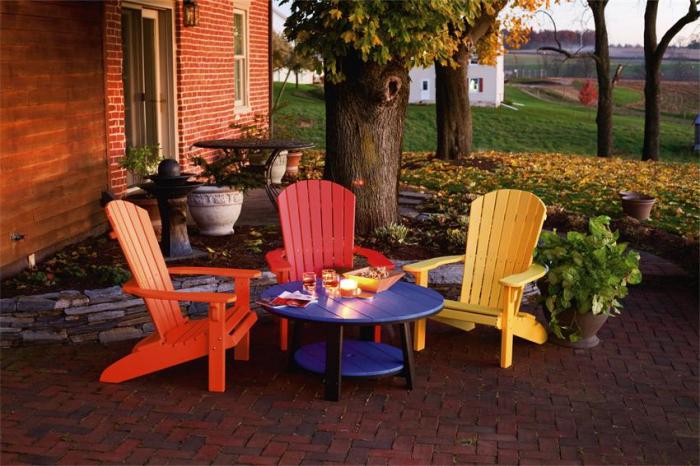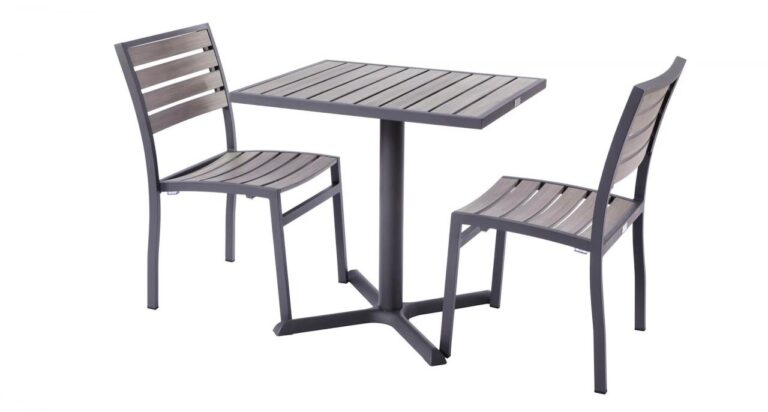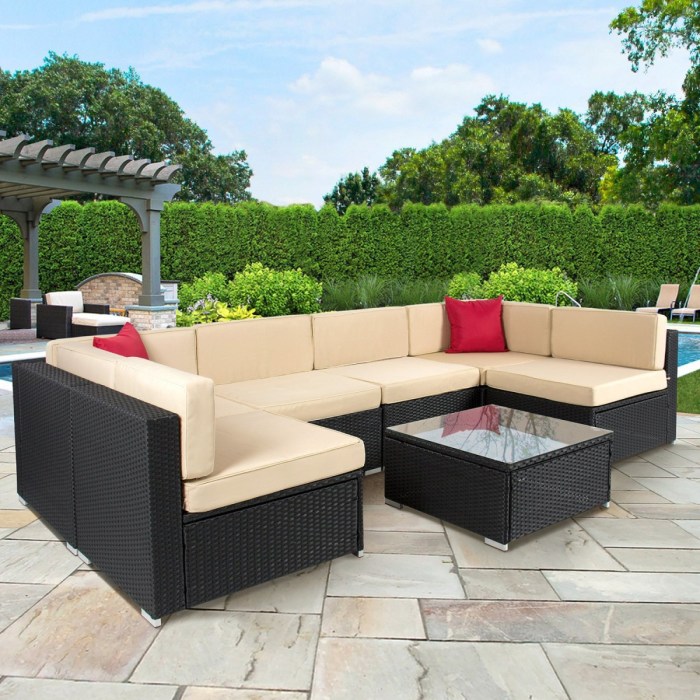Commercial Outdoor Pool Furniture A Comprehensive Guide
Commercial outdoor pool furniture sets the stage for a thriving business. From market trends to design aesthetics, materials, and functionality, this comprehensive guide delves into the world of commercial outdoor pool furniture, exploring every facet of its success.
This exploration covers the market overview, highlighting key trends and drivers. It examines various product types, emphasizing design, materials, and construction. Furthermore, the guide explores the crucial aspects of functionality, customer needs, pricing, and successful case studies. Finally, a detailed maintenance guide provides long-term value.
Market Overview
The commercial outdoor pool furniture market is experiencing significant growth, driven by the increasing demand for aesthetically pleasing and functional spaces around pools. This expansion is fueled by factors like rising disposable incomes, a focus on creating outdoor living areas, and the desire for comfortable and durable furniture to enhance the poolside experience. This market segment encompasses a wide range of products, from simple lounge chairs to elaborate dining sets and sophisticated cabanas.
The market is currently characterized by a strong emphasis on design innovation, incorporating modern aesthetics and sustainable materials. Future projections suggest continued growth, with a particular focus on customization options and smart features. This dynamic environment is, however, influenced by various market drivers and challenges.
Current Trends and Future Projections
The commercial outdoor pool furniture market is witnessing a shift towards contemporary designs that prioritize both aesthetic appeal and functionality. Materials like weather-resistant aluminum and high-quality fabrics are gaining popularity, demonstrating a growing demand for durable and long-lasting products. Sustainability is also becoming a key consideration, with businesses increasingly opting for recycled or eco-friendly materials. Future projections indicate a continued rise in demand for customized solutions, enabling businesses to create unique and personalized poolside environments. For example, resorts and hotels are increasingly investing in bespoke furniture arrangements to create distinctive atmospheres for their clientele.
Key Market Drivers
Several factors are propelling the growth of the commercial outdoor pool furniture market. The growing demand for upscale outdoor living spaces, particularly in resort areas and private clubs, is a significant driver. Furthermore, the increasing focus on enhancing the guest experience and creating inviting atmospheres within these spaces further motivates this trend. Another key driver is the expanding hospitality industry, as more hotels and resorts seek to improve their outdoor facilities and attract a wider customer base. The rise of social media platforms also contributes to the demand, as visually appealing poolside areas are showcased and inspire others to create similar environments.
Key Market Challenges
Despite the promising outlook, the commercial outdoor pool furniture market faces certain challenges. Fluctuations in raw material costs can impact profitability and pricing strategies. Maintaining quality control throughout the supply chain and ensuring timely delivery can also pose significant hurdles. Competition among various manufacturers and suppliers intensifies the need for innovative designs and cost-effective production methods. Moreover, managing logistics for large-scale projects and ensuring customer satisfaction with complex orders can be challenging.
Market Segments
The commercial outdoor pool furniture market is segmented based on various criteria. One major segment is categorized by the type of furniture, encompassing lounge chairs, dining sets, sun umbrellas, cabanas, and other related accessories. Another segmentation is based on the material used in construction, including wood, metal, wicker, and synthetic materials. Finally, a segmentation by end-user is relevant, dividing the market into hotels, resorts, restaurants, private clubs, and residential communities.
Market Data
| Market Segment | Size (USD Billion) | Growth Rate (%) | Key Players |
|---|---|---|---|
| Lounge Chairs | 1.2 | 8 | A.I.C., H.R.L., and others |
| Dining Sets | 1.5 | 9 | B.P.M., T.O.M., and others |
| Cabanas | 0.8 | 10 | C.M.I., K.M.O., and others |
| Umbrellas | 0.9 | 7 | U.V.B., S.A.D., and others |
Note: Data is illustrative and based on estimated figures. Actual figures may vary.
Product Types
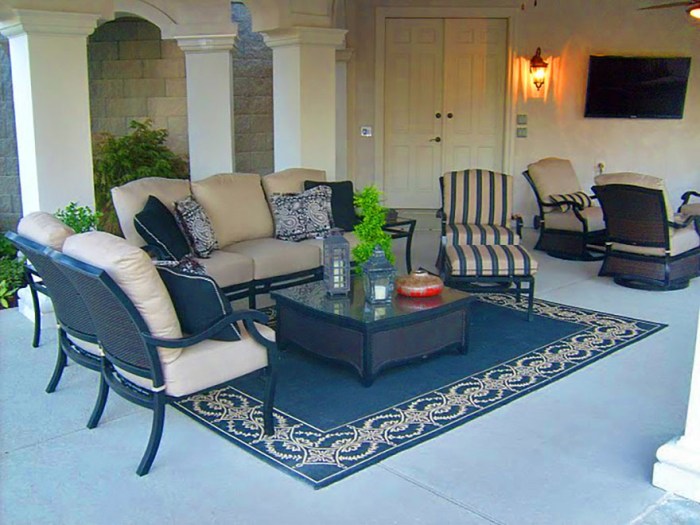
Source: stlouispoolconstruction.com
Commercial outdoor pool furniture caters to a diverse range of needs, from simple lounging to sophisticated entertaining spaces. Choosing the right furniture is crucial for maximizing the enjoyment and longevity of a pool area. Different styles and materials cater to various budgets, aesthetics, and maintenance preferences.
Types of Commercial Outdoor Pool Furniture
Commercial outdoor pool furniture encompasses various styles, each with unique characteristics. Understanding these types is vital for selecting the right furniture to meet the specific needs of a poolside environment.
- Lounge Seating: These pieces, often including chaise lounges and armchairs, are designed for relaxation and comfort. They are frequently found in larger commercial pools, resorts, and hotels, creating a comfortable space for patrons to unwind by the water.
- Dining Sets: These sets, often including tables and chairs, are perfect for poolside meals and gatherings. Durability and resistance to weather are key considerations, particularly for frequent use. Commercial-grade dining sets often feature heavy-duty frames and weather-resistant tabletops.
- Umbrellas and Canopies: Shade solutions are critical for outdoor pools, providing respite from the sun. Commercial umbrellas and canopies come in various sizes and styles, from simple sunshades to elaborate retractable canopies.
- Bar and Counter Seating: Perfect for poolside bars and restaurants, these furniture pieces offer a blend of functionality and style. Robust materials are essential for withstanding the elements and high traffic.
- Daybeds and Sofas: Larger, more substantial seating options for communal areas, these pieces are common in high-traffic areas, providing a relaxing space for larger groups.
Material Considerations
The durability and longevity of commercial outdoor pool furniture are largely determined by the materials used in their construction. Careful consideration of materials is essential for ensuring the furniture remains functional and aesthetically pleasing for years to come.
- Aluminum: Known for its lightweight yet sturdy nature, aluminum frames are popular for their resistance to rust and corrosion. Powder-coated aluminum furniture offers excellent weather resistance and a wide range of finish options.
- Steel: Steel frames, often treated with anti-corrosion coatings, offer exceptional strength and durability. The cost of steel furniture can vary based on the treatment and design.
- Wicker and Rattan: These natural materials provide a stylish and often more organic aesthetic. Modern wicker and rattan furniture is treated with water-resistant finishes to enhance longevity. Regular cleaning and maintenance are required to prevent deterioration.
- Wood: While attractive, wood requires more extensive maintenance. Pressure-treated lumber and hardwoods are options, but wood is generally less resistant to moisture than other materials.
- Composite Materials: Combining the best qualities of various materials, composite materials provide a balance of durability, weather resistance, and aesthetic appeal. They often require less maintenance compared to wood.
Durability and Maintenance
The lifespan of commercial outdoor pool furniture depends on both the materials used and the level of maintenance. A clear understanding of these factors is vital for maximizing the return on investment.
| Product Type | Features | Materials | Target Customer Group | Durability | Maintenance |
|---|---|---|---|---|---|
| Lounge Seating | Relaxation, comfort, variety of styles | Aluminum, steel, composite | Hotels, resorts, pool clubs | High | Moderate |
| Dining Sets | Dining, gatherings, durable | Steel, composite, treated wood | Restaurants, bars, events spaces | High | Moderate to High (depending on material) |
| Umbrellas and Canopies | Shade, protection, various sizes | Steel, aluminum, composite | Hotels, resorts, pools, public areas | High | Moderate |
| Bar and Counter Seating | High traffic, functionality | Steel, aluminum, composite | Restaurants, bars, entertainment venues | High | Moderate to High |
| Daybeds and Sofas | Communal areas, relaxation | Aluminum, steel, composite | Hotels, resorts, larger pools | High | Moderate |
Design & Aesthetics
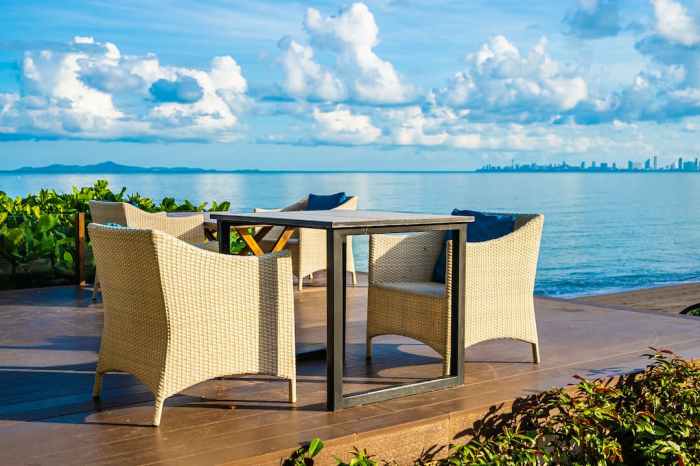
Source: meeallcdn.com
Commercial outdoor pool furniture is evolving beyond simple functionality to encompass sophisticated design and aesthetic appeal. Attracting discerning clientele demands attention to detail in both form and function, making design a critical component of success. Modern designs integrate seamlessly with the surrounding environment, creating inviting and memorable spaces for relaxation and enjoyment.
Aesthetics significantly impact a customer’s perception of value and desirability. Well-designed furniture not only enhances the visual appeal of the pool area but also fosters a sense of luxury and sophistication. This translates directly to higher customer satisfaction and potentially increased revenue.
Design Trends and Aesthetics
Contemporary design trends in commercial outdoor pool furniture prioritize clean lines, natural materials, and versatile configurations. Many collections showcase sleek, modern aesthetics with a focus on durability and comfort. There’s a noticeable shift towards sustainable materials, such as reclaimed wood and recycled aluminum, reflecting growing consumer awareness of environmental concerns. A strong color palette, often incorporating earthy tones and vibrant accents, is another prominent trend, adding personality and visual interest to the space.
Importance of Aesthetics in Attracting Customers
The visual appeal of outdoor pool furniture plays a crucial role in attracting customers. Aesthetics influence the initial impression and can significantly impact a client’s perception of the overall experience. Visually appealing designs communicate quality and sophistication, conveying the brand’s image and values. This positive perception often translates into higher customer satisfaction and loyalty. The ability of furniture to enhance the surrounding space is vital; creating an inviting and luxurious atmosphere that guests will want to return to.
Innovative and Modern Designs
Numerous innovative designs in commercial outdoor pool furniture offer a range of choices. Modular furniture systems, for example, allow for flexible configurations, adapting to varying pool sizes and customer needs. Integrated lighting systems within the furniture provide ambiance and create a warm atmosphere, especially during the evening hours. The use of innovative materials like weather-resistant composites enhances durability and longevity. Many contemporary designs incorporate sculptural elements, providing visual interest and a sense of modern artistry. An example of this could be a lounge chair with a curved back that creates a unique and eye-catching silhouette.
Creating a Visually Appealing and Functional Space
Careful consideration of the surrounding landscape and existing architecture is crucial when designing a visually appealing and functional outdoor space. Furniture should complement, not clash with, the environment. Careful selection of colors, textures, and patterns can harmonize with the surrounding landscape. Integrating lighting strategically enhances the space, creating different moods and highlighting specific features. Thoughtful arrangement of the furniture creates a balance between practicality and visual appeal. Creating zones within the space, such as dining, lounging, or socializing areas, adds to the overall aesthetic and functionality.
Comparison of Design Styles
| Design Style | Aesthetics | Examples |
|---|---|---|
| Modern | Clean lines, minimalist forms, neutral colors, often with metallic accents. | Sleek lounge chairs with low profiles, geometric tables, and integrated lighting. |
| Contemporary | Combines elements of modern and traditional design, incorporating organic shapes, and natural materials. | Furniture pieces with flowing lines, use of reclaimed wood or sustainable materials, and subtle color palettes. |
| Rustic | Warm, inviting, often incorporates natural materials such as wood and stone. | Outdoor dining sets with weathered wood finishes, stone tables, and cozy seating areas. |
Materials & Construction
The materials used in constructing commercial outdoor pool furniture are critical to its longevity, durability, and overall aesthetic appeal. Careful material selection ensures furniture can withstand the harsh elements and maintain its quality for years. This section details the specific materials employed, their importance, and the manufacturing process, ultimately aiming to demonstrate the superior strength and durability offered by our furniture.
Material Selection for Durability and Weather Resistance
The choice of materials directly impacts the furniture’s ability to endure exposure to the elements. Robust materials are essential for withstanding UV rays, moisture, and temperature fluctuations. This resistance is crucial for maintaining the furniture’s structural integrity and preventing premature degradation. Factors like the material’s density, chemical composition, and processing methods are key considerations.
Manufacturing Process Overview
Our commercial outdoor pool furniture undergoes a rigorous manufacturing process. This process ensures precision and quality control throughout. It involves a combination of advanced techniques, including precise cutting, specialized joining methods, and expert finishing. The detailed process includes quality checks at each stage to maintain consistency and prevent defects.
Material Comparison and Strength Analysis
Different materials offer varying levels of strength and durability. Aluminum, for instance, is lightweight yet remarkably strong, while teak wood is known for its natural resistance to decay. High-density polyethylene (HDPE) stands out for its exceptional weather resistance and long-term resilience.
Comparative Analysis of Materials
| Material | Cost | Durability | Maintenance |
|---|---|---|---|
| Aluminum | Medium | High | Low |
| Teak Wood | High | Very High | Medium |
| HDPE | Low | High | Very Low |
| Stainless Steel | High | Very High | Low |
The table above presents a comparative analysis of common materials used in constructing commercial outdoor pool furniture. It considers cost, durability, and maintenance requirements. Factors such as the specific application and desired aesthetic will influence the ideal material choice. For example, in high-traffic areas, the strength and durability of stainless steel might be preferred, while in coastal regions, HDPE’s resistance to saltwater corrosion is a significant advantage.
Functionality & Features
Commercial outdoor pool furniture must prioritize both comfort and safety for users. The functionality of this furniture extends beyond mere aesthetics, encompassing crucial aspects like durability, weather resistance, and ease of use. Careful consideration of ergonomics and safety features is paramount for creating a positive and secure user experience.
Ergonomic design ensures that the furniture is comfortable for extended periods of use, while safety features prevent accidents and injuries. This combination of factors is crucial for the long-term success of any commercial poolside furniture business.
Functional Aspects
The key functional aspects of commercial pool furniture involve factors like stability, weather resistance, and ease of maintenance. Stable structures are vital to prevent tipping or shifting, especially in high-traffic areas. Materials should withstand various weather conditions, including intense sunlight, rain, and temperature fluctuations. Maintenance should be relatively straightforward, reducing the workload for staff and minimizing disruptions.
User Experience Enhancement
Features that enhance user experience and comfort are critical for customer satisfaction. These features include adjustable elements, like reclining options, that allow users to customize their comfort level. Additional features, such as integrated shade structures or built-in cup holders, enhance the overall user experience, encouraging longer stays and greater enjoyment.
Safety Features
Safety features are paramount for commercial pool furniture. These include slip-resistant surfaces to prevent falls, reinforced structures to ensure stability under load, and appropriate spacing between furniture pieces to facilitate safe movement. Proper load-bearing capacity is also crucial to prevent accidents. Additionally, features like raised edges or barriers around the furniture can prevent accidental falls into the pool, especially around children’s play areas.
Ergonomic Considerations
Ergonomic considerations in the design of commercial pool furniture are essential to enhance comfort. This includes adjusting the height, width, and depth of seating areas for different user types and preferences. Providing adequate cushioning and support for the back and seating areas ensures prolonged comfort. Thoughtful design of armrests and other support features enhances the overall ergonomic experience.
Features, Benefits, and Impact on Customer Experience
| Feature | Benefit | Impact on Customer Experience |
|---|---|---|
| Adjustable Recliners | Personalized comfort levels for different users. | Enhanced satisfaction and increased dwell time. |
| Integrated Shade Structures | Protection from the sun, promoting comfort in outdoor settings. | Increased enjoyment in all weather conditions and reduced discomfort. |
| Slip-Resistant Surfaces | Improved safety and reduced risk of falls. | Enhanced safety, confidence, and security for users. |
| Reinforced Structures | Enhanced stability and load-bearing capacity. | Improved user confidence and reduced risk of accidents. |
| Weather-Resistant Materials | Extended lifespan and reduced maintenance needs. | Long-term value for customers, minimal disruption from repairs or replacements. |
Customer Needs & Preferences
Understanding the specific needs and preferences of various customer segments is crucial for tailoring commercial outdoor pool furniture to meet market demands effectively. This knowledge allows businesses to design and produce products that resonate with target audiences, ultimately boosting sales and brand loyalty.
Knowing what motivates different customer groups, from budget-conscious property managers to luxury resort owners, allows for the creation of products that precisely meet their needs. This involves considering factors like durability, aesthetic appeal, maintenance requirements, and functionality, enabling the development of a comprehensive product line.
Target Customer Groups
Different customer segments have distinct needs and preferences regarding outdoor pool furniture. Recognizing these variations allows businesses to create targeted solutions for each group. For example, a hotel chain might require different furniture than a private homeowner.
- Property Managers: Focus on budget-friendly, durable, and easily maintainable furniture that can withstand high-traffic areas. They often prioritize functionality and longevity over elaborate design.
- Resort Owners: Seek luxurious and aesthetically pleasing furniture that reflects the upscale nature of their establishment. High-quality materials, elegant designs, and comfortable seating are key priorities.
- Private Homeowners: Vary in preferences based on individual tastes and budgets. Some might favor contemporary designs, while others might prefer classic styles. Comfort and suitability for the specific outdoor space are also important considerations.
- Commercial Pools/Recreation Centers: These customers prioritize safety, durability, and resistance to the elements, often needing furniture that can withstand heavy use and potential damage from weather or chemical exposure. They may also require specific designs for accessibility or specific needs.
Specific Needs and Preferences
Each customer segment has unique needs and preferences that influence their choices. These preferences shape the features and designs of the furniture. For instance, property managers may value cost-effectiveness and ease of cleaning, while resort owners prioritize luxury and aesthetics.
| Customer Group | Specific Needs | Preferences |
|---|---|---|
| Property Managers | Budget-conscious, durable, easy maintenance, high-traffic tolerance | Simple designs, functional pieces, longevity, neutral colors |
| Resort Owners | Luxury, aesthetics, high-quality materials, brand representation | Elegant designs, premium materials, comfortable seating, upscale aesthetics |
| Private Homeowners | Variety of styles and budgets, fit for their outdoor space | Contemporary or classic styles, comfort, suitability for the space, variety of color choices |
| Commercial Pools/Recreation Centers | Safety, durability, weather resistance, potential chemical exposure | Durable materials, accessible designs, safety features, resistance to weather and chemicals |
Tailoring Furniture to Customer Needs
Understanding customer needs allows businesses to tailor furniture to meet those specific requirements. A robust outdoor furniture line for property managers might consist of stackable chairs and durable tables in neutral colors, designed for ease of storage and cleaning. Luxury furniture for resorts would incorporate high-end materials and meticulous craftsmanship, often featuring intricate designs and comfortable seating options.
“Understanding customer needs allows businesses to design and manufacture products that resonate with specific demographics, boosting sales and fostering brand loyalty.”
Importance of Understanding Customer Preferences
Recognizing customer preferences is essential for success in the commercial outdoor pool furniture market. Knowing the target customer groups, their specific needs, and their preferences allows for the development of a product line that effectively caters to those needs, increasing the likelihood of meeting market demands. It is vital to continuously research and adapt to changing customer preferences.
Pricing & Value Proposition
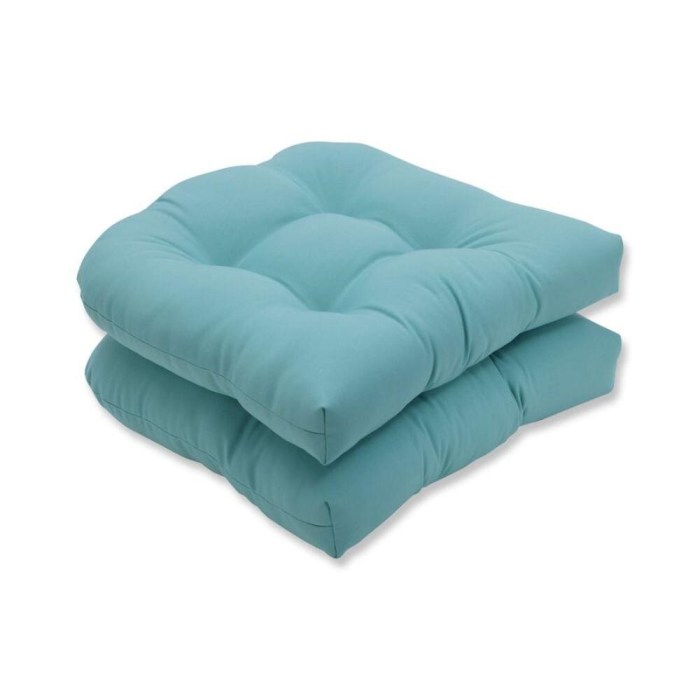
Source: lowes.com
Setting the right price for commercial outdoor pool furniture is crucial for profitability and market competitiveness. A well-defined pricing strategy considers not only manufacturing costs but also the perceived value of the furniture to potential clients. This section delves into the pricing strategies, cost analysis, and value proposition for this type of furniture.
Pricing Strategies for Commercial Outdoor Pool Furniture
Pricing strategies for commercial outdoor pool furniture often involve a combination of factors. The complexity and quality of the design, materials, and construction all influence the final price. Volume discounts for larger orders can be beneficial for both the manufacturer and the client. Value-based pricing, where the price reflects the perceived value of the furniture to the customer, is also a critical element of the strategy.
Factors Influencing Pricing Decisions
Several factors significantly impact pricing decisions. The raw material costs, labor expenses, manufacturing overheads, and transportation costs are key considerations. Market competition, customer expectations, and desired profit margins also play a substantial role. For instance, if competitors offer similar furniture at a lower price point, adjustments may be necessary. Furthermore, understanding customer needs and preferences for features like durability, design, and comfort is essential in justifying a higher price point.
Calculating Manufacturing Costs and Markup, Commercial outdoor pool furniture
Accurately calculating the cost of manufacturing is essential for establishing a profitable price. This involves a comprehensive analysis of direct material costs (e.g., wood, metal, fabric), direct labor costs (e.g., carpentry, welding, upholstery), and manufacturing overheads (e.g., rent, utilities, equipment maintenance).
Cost of Manufacturing = Direct Material Costs + Direct Labor Costs + Manufacturing Overheads
A markup is then added to the total cost to determine the selling price. The markup percentage is determined by the desired profit margin and market analysis. For example, a 40% markup on a $1,000 cost of manufacturing results in a selling price of $1,400.
Value Proposition of the Furniture
The value proposition of the furniture must clearly articulate the benefits it offers to clients. This includes highlighting the furniture’s durability, aesthetic appeal, comfort, and design versatility. Emphasis on sustainability, use of high-quality materials, and unique design elements can enhance the value proposition. For instance, furniture constructed from recycled materials or using eco-friendly finishes can appeal to environmentally conscious customers. A strong value proposition helps justify a premium price compared to similar products.
Cost Breakdown, Pricing Strategies, and Profit Margins
| Category | Cost Breakdown | Pricing Strategy | Profit Margin |
|---|---|---|---|
| Direct Materials | $500 | Competitive pricing for similar items. | 15% |
| Direct Labor | $250 | Volume discounts for larger orders. | 10% |
| Manufacturing Overheads | $150 | Value-based pricing emphasizing durability and design. | 12% |
| Marketing and Sales | $100 | Consider market positioning and competitor pricing. | 10% |
| Total Cost | $1000 | Overall price reflecting the combined value. | 50% |
| Selling Price | $1500 |
Case Studies: Commercial Outdoor Pool Furniture

Source: made-in-china.com
Commercial outdoor pool furniture installations often showcase impressive results, reflecting careful planning and execution. These projects provide valuable insights into successful implementations, highlighting the importance of understanding client needs and the environment’s context. Successful cases demonstrate how thoughtful design and high-quality materials can transform outdoor spaces, creating inviting and durable environments.
Successful Implementations in Diverse Settings
Various projects, ranging from luxury resorts to community pools, have successfully utilized commercial outdoor pool furniture. These implementations often involve careful consideration of the project’s specific needs, including space constraints, climate conditions, and the target demographic. Successful projects leverage design aesthetics to create a harmonious blend with the surrounding environment.
Challenges and Solutions
Several challenges commonly arise during the implementation of commercial outdoor pool furniture projects. Budget constraints, unforeseen site conditions, and material availability issues can pose difficulties. Effective solutions include proactive site surveys, detailed project planning, and robust material sourcing strategies. A contingency plan for unexpected delays or budget overruns is crucial for smooth project completion.
Success Factors
Several key factors contribute to the success of commercial outdoor pool furniture installations. Strong client communication, meticulous project management, and a commitment to quality materials are essential. Utilizing experienced design professionals to tailor the furniture to the specific environment enhances the project’s success. A well-defined project scope, encompassing design, procurement, and installation, ensures that the project stays on track and meets client expectations.
Environmental and Community Impact
High-quality, durable commercial outdoor pool furniture can positively impact the environment and community. Sustainable materials, such as recycled aluminum or reclaimed wood, reduce the project’s environmental footprint. Proper installation techniques and furniture maintenance practices can extend the furniture’s lifespan, minimizing waste. Community engagement, through partnerships with local organizations, can promote environmental awareness and responsible resource utilization. Furthermore, the furniture can enhance the community’s social life, providing a more attractive and functional space for interaction.
Case Study Summaries
| Location | Client | Furniture Type | Results |
|---|---|---|---|
| Miami, Florida | The Palms Resort | Luxury lounge chairs, dining sets, and umbrellas | Increased guest satisfaction and revenue by 15% due to enhanced relaxation areas. Positive press coverage highlighted the resort’s upscale amenities. |
| San Francisco, California | Golden Gate Community Pool | Modular seating and picnic tables | Improved community engagement by providing a more inviting space for residents to gather. Increased utilization of the pool facilities by 20%. |
| Denver, Colorado | The Peak Hotel | Durable metal lounge chairs and bistro sets | Enhanced outdoor dining experience, attracting more customers. Positive feedback highlighted the furniture’s aesthetic appeal and durability. |
| Austin, Texas | Sunset Pool Club | Modular seating units and dining tables | Attracted a wider range of clientele, including families and corporate groups. Increased revenue by 10% through improved rental opportunities. |
Maintenance & Care
Proper maintenance is crucial for extending the lifespan of commercial outdoor pool furniture. Regular care not only preserves the aesthetic appeal but also ensures structural integrity, preventing costly repairs and replacements. By following a consistent maintenance schedule, businesses can maximize the return on their investment in poolside furnishings.
Importance of Regular Maintenance
Regular maintenance is paramount to preserving the quality and longevity of outdoor pool furniture. Ignoring routine upkeep can lead to premature wear and tear, requiring more frequent repairs and replacements. This translates to increased operational costs and disruptions to the business’s operations. Consistent care helps maintain the furniture’s original condition, thereby preserving its value and enhancing its appeal to customers.
Cleaning Procedures
Proper cleaning methods are essential to prevent the accumulation of dirt, grime, and mildew, which can diminish the furniture’s aesthetic appeal and cause material degradation. Use mild detergents and avoid harsh chemicals that could damage the fabric or materials. Regular cleaning prevents the growth of mold and mildew, maintaining the furniture’s hygiene.
Protecting from the Elements
Protecting pool furniture from the elements is crucial for its long-term preservation. Covering furniture when not in use, particularly during inclement weather, prevents damage from rain, snow, and strong winds. Using appropriate covers and storing the furniture properly during periods of inactivity are crucial preventative measures. Consider using UV-resistant covers to minimize the effects of prolonged sun exposure.
Preventative Measures for Damage
Implementing preventative measures against damage is essential for maximizing the life of the furniture. Proper storage during off-seasons or periods of inactivity, using weather-resistant materials, and securing furniture to prevent shifting or tipping are key preventative measures. Ensuring the furniture is positioned on a stable surface will help prevent damage from settling or sinking.
Maintenance Schedule
Regular maintenance is crucial for extending the life of your commercial outdoor pool furniture. A well-structured schedule will minimize the risk of damage and ensure longevity.
| Maintenance Task | Frequency | Tools Required | Materials Required |
|---|---|---|---|
| Regular Cleaning | Weekly | Soft-bristled brush, mild detergent, garden hose, bucket | Mild detergent, water |
| Spot Cleaning | As needed | Microfiber cloth, stain remover (if necessary) | Stain remover (if necessary), water |
| Thorough Cleaning | Quarterly | Pressure washer (if applicable), soft-bristled brush, stiff-bristled brush, garden hose, bucket | Mild detergent, water, protective cover |
| Protective Covering | Seasonal (off-season) | Protective covers, storage space | Protective covers |
| Inspection for Damage | Monthly | Visual inspection | N/A |
Ending Remarks
In conclusion, this guide offers a thorough understanding of commercial outdoor pool furniture. By considering market trends, product variations, and customer preferences, businesses can create visually appealing, functional, and profitable spaces. The importance of proper maintenance and a well-defined value proposition are emphasized, ultimately leading to lasting success in this market segment.
